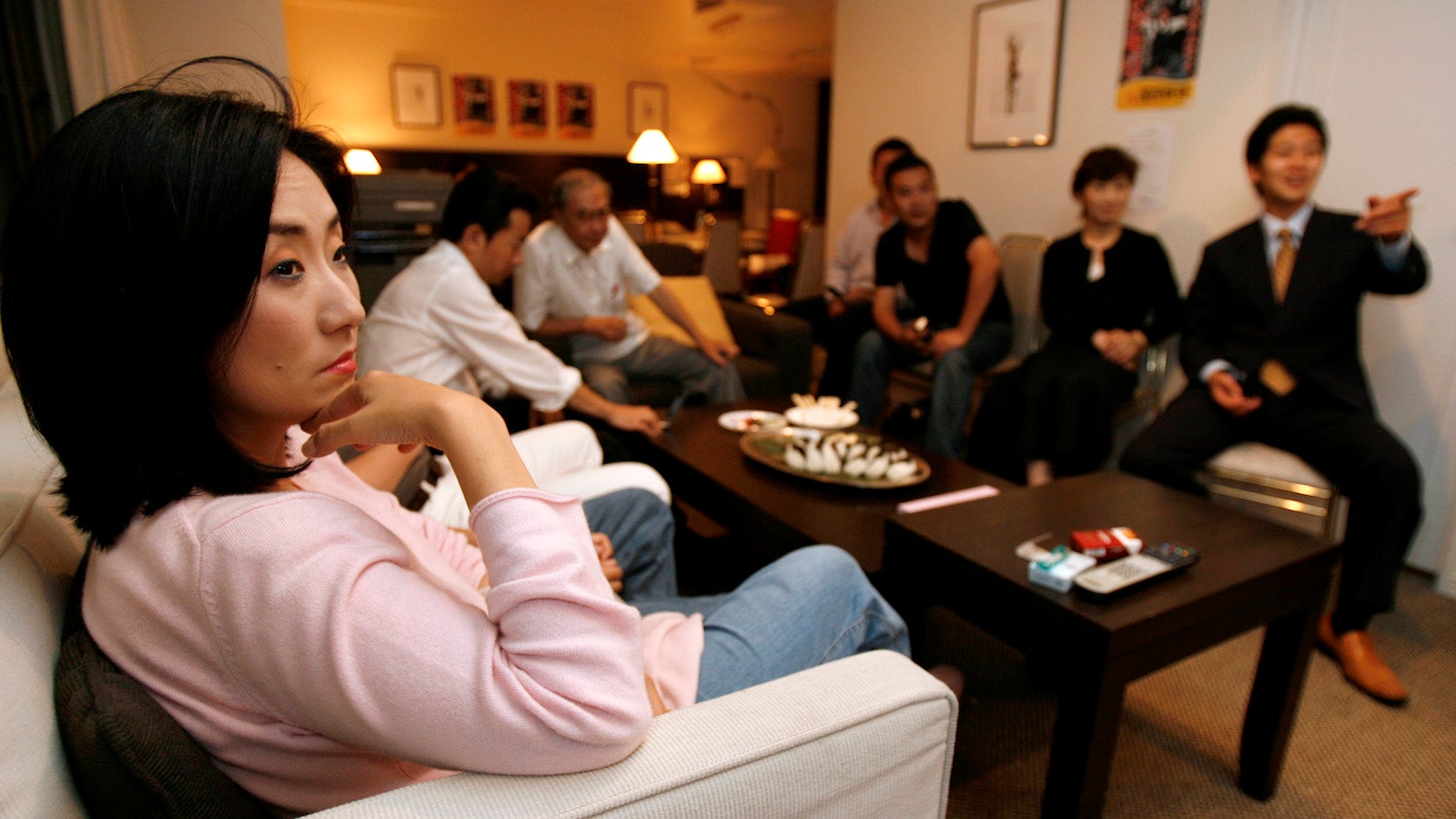In Japan, a lot of the country stays home on New Year’s Eve and watches TV
The question of how to spend New Year’s Eve each year often brings with it a surge of dreaded FOMO (Fear of Missing Out): Which party will you attend? Who with? Will the bar down the road be more fun? Or should you head to that fancy party instead? And, of course, who will you kiss at the end of the countdown?


The question of how to spend New Year’s Eve each year often brings with it a surge of dreaded FOMO (Fear of Missing Out): Which party will you attend? Who with? Will the bar down the road be more fun? Or should you head to that fancy party instead? And, of course, who will you kiss at the end of the countdown?
But Japan has a New Year’s Eve tradition that quells most if not all of these social anxieties: Watching competitive singing.
While Tokyo and other cities around the country offer plenty of opportunities to engage in hedonism on the evening of Dec. 31, for most of Japan, New Year’s Eve is a quiet time to be spent with family. The Japanese New Year’s period, oshogatsu (お正月), actually lasts until Jan. 3, and so for the sake of endurance, many families choose to stay mostly at home, eat, drink, and watch television.
Our family, like a number of other households all over Japan, always stays glued to the annual NHK “Red and White Song Festival” (NHK紅白歌合戦). Known as the Kohaku for short, it’s four hours of televised glitz, schmaltz, and saccharine nostalgia that has been a traditional way to ring in the New Year in Japan since 1951. At the height of its popularity in the 1960s, the show was viewed by over three quarters of Japanese TV-watching households each New Year’s Eve.
The competition pits two gender-segregated teams comprised of popular (and sometimes decrepit) entertainers competing in front of a panel of judges: the men (the white team) versus the women (the red team). The show starts at 7:15pm sharp and continues until 11:45pm, when the winning team is announced. (This being gender-biased Japan, the men’s team usually wins.)
This year’s theme is Yume wo Utao (“Let’s sing a dream”), but it’s increasingly looking like the Kohaku’s producers’ heads are in the clouds. Ratings have continued to slump year after year, and in 2015 the show had a viewer share of just 39%, compared to 81% in 1963.
The problem? “Young people think the Kohaku is uncool,” according to a Japanese ratings researcher who analyzed the December 2015 show. The jokes are corny, and there’s an awful lot of enka (Japan’s version of country music), which is not so popular with younger folks.
But me and my family likes it. Every year, no matter where in the world we are, we figure out a way to tune into the Kohaku. We eat great food and drink booze while watching two teams slug it out with their bare vocal cords on satellite television. It’s a no-stress way to end the year and begin a new one—we’re not missing out on anything.
Instead, by staying home and spending down time together with family, it’s an opportunity to reflect on the past year and get prepared for the one just starting up. While there is booze to drink, good food to eat, and brainless Japanese television to dull the mind, Japan’s quiet oshogatsu period acts as a blank sheet of paper for the coming year. It’s a field of fresh, untracked snow to consider where to go and what to do in the coming year.